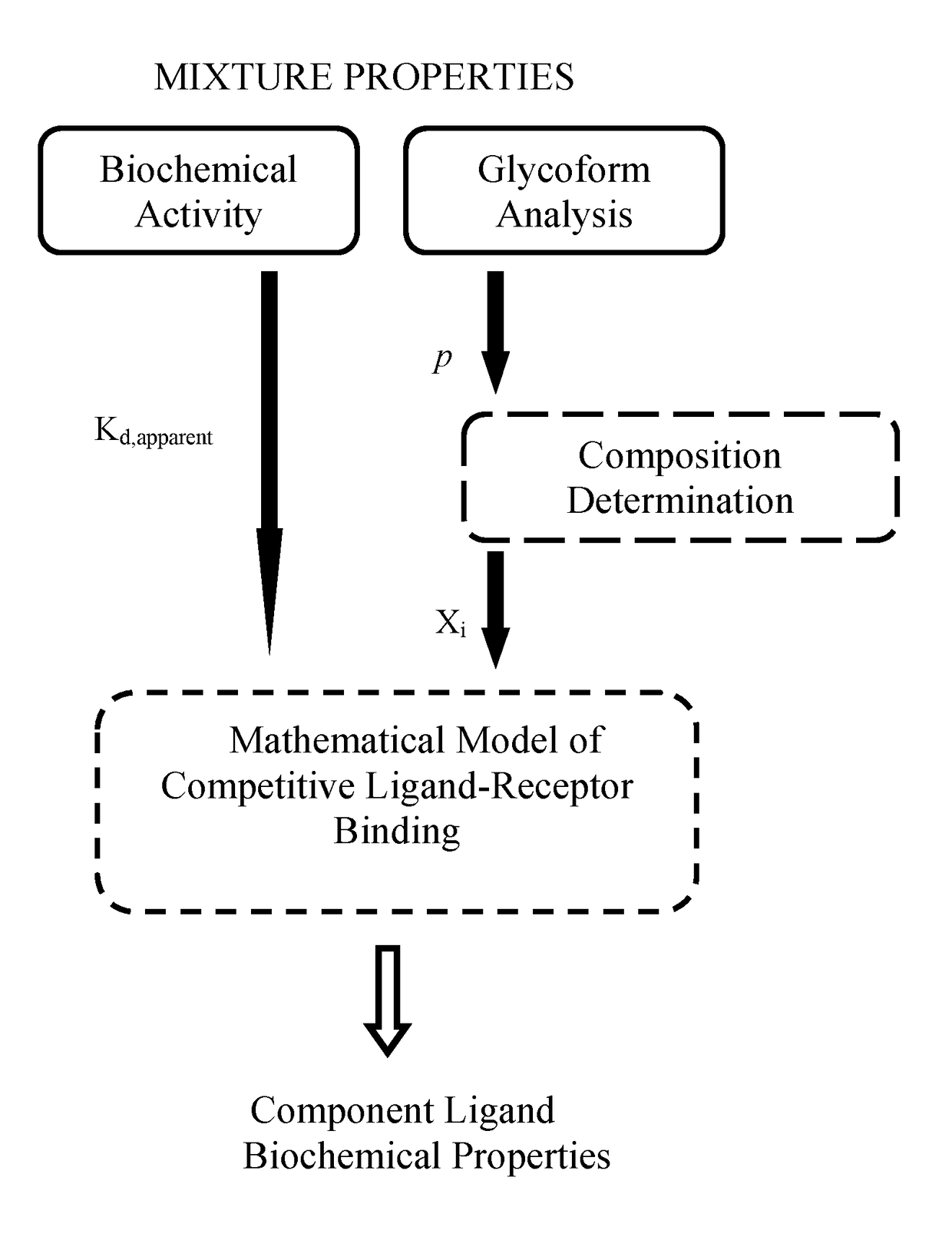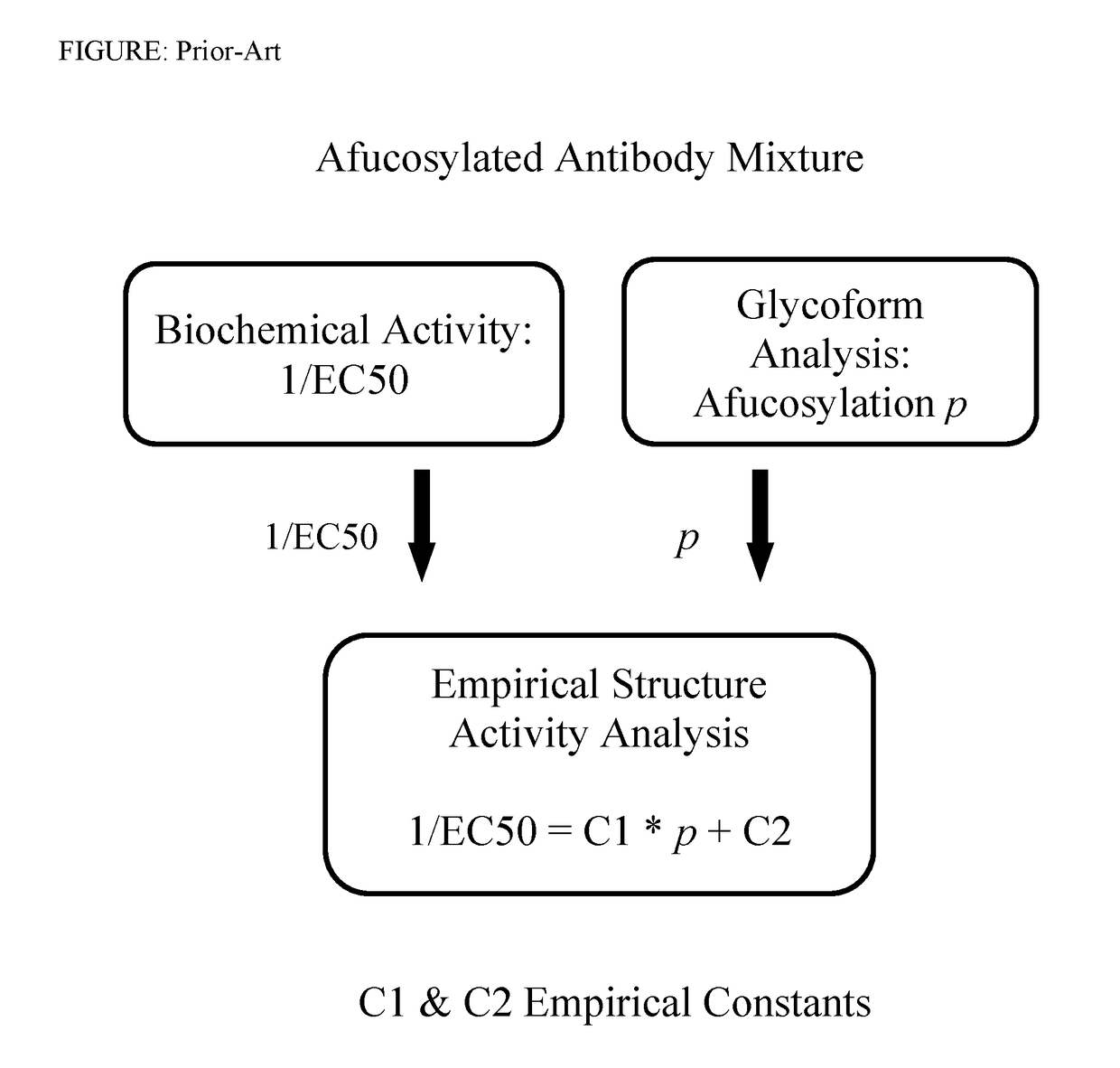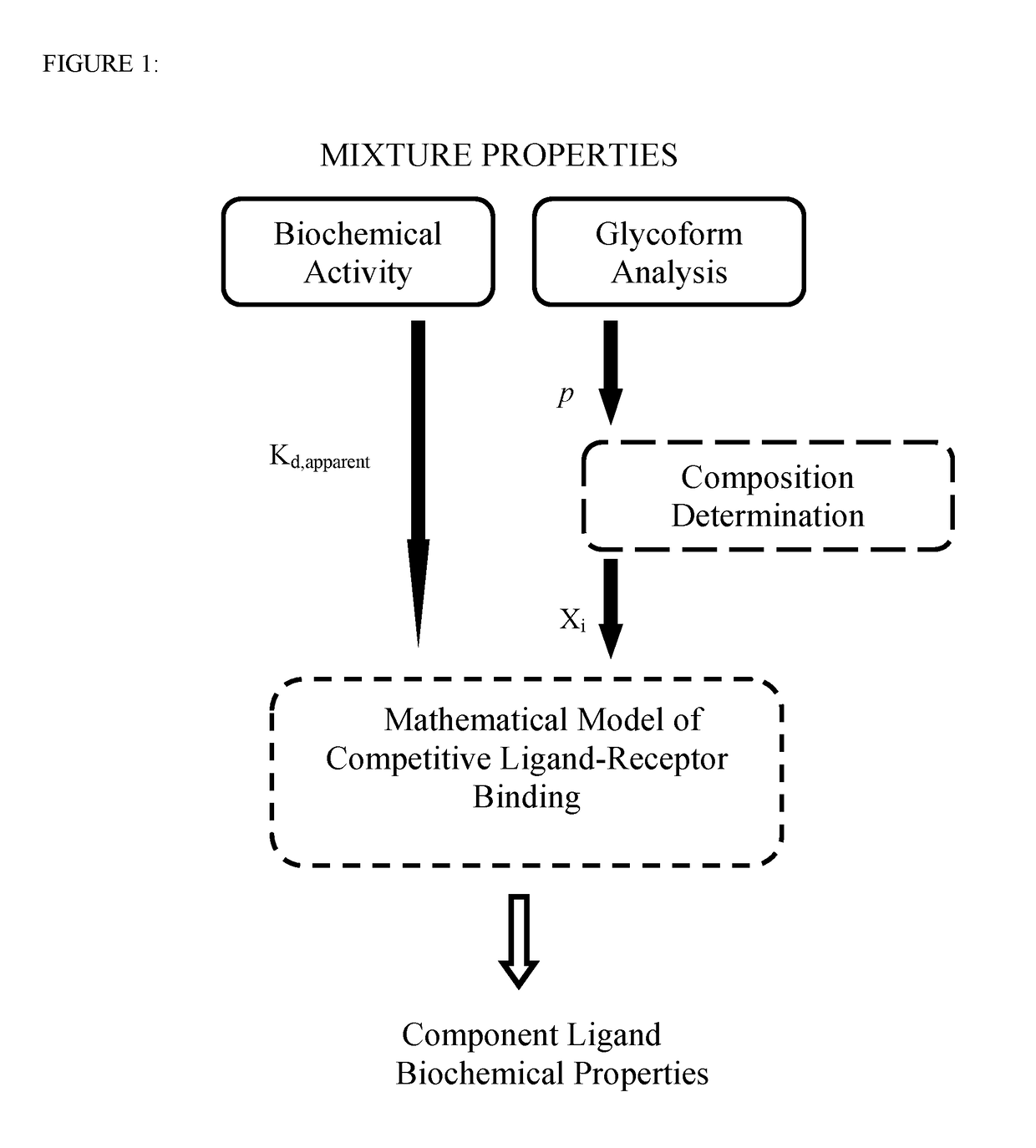Quantitative methods for heterogeneous sample composition determination and biochemical characterization
a technology of composition determination and quantitative methods, applied in the direction of instruments, molecular structures, design optimisation/simulation, etc., can solve the problems of inability to reliably identify and quantify ligands in mixtures, quantity and specific activity of biologically active glycoforms continues to challenge researchers, and the direct experimental method for reliably identifying and quantitating ligands is challenged
- Summary
- Abstract
- Description
- Claims
- Application Information
AI Technical Summary
Benefits of technology
Problems solved by technology
Method used
Image
Examples
example 3
te Activity into Composition & Specific Activity
[0052]The competitive ligand-receptor binding mechanism provides the means to decompose mixture activity into component ligand contributions and to dissect component ligand contributions into composition and specific activity differences. For the afucosylated antibody system, steady state receptor binding activity is given by equation (2):
activity=1EC50=1Kd,apparent=XAKA+XFKF+XAFKAF.(2)
Equation (2) reveals that the contribution to activity of each constituent antibody is the multiplicative product of the specific activity 1 / K, and the mole fraction Xi of the antibody. Therefore knowledge of the three dissociation equilibrium constants KA, KF and KAF and the mole fractions XA, XF and XAF is sufficient to completely and uniquely decomposed mixture activity. Due to the availability of pure homogeneous afucosylated and fucosylated antibodies, KA and KF are obtained using standard experimental methods. However the hemi-afucosylated antibody...
example 1
of Homogeneous Antibodies
[0063]For binary mixture of homogeneous fucosylated and homogeneous afucosylated antibodies that compete for the common receptor FcγRIIIa (CD16a), equation (14) is the specific form of equation (2) that applies. Since XAF≈0 for this system, p is given by XA. FIG. 6 illustrates how equation (14) is used to compute mixture activity from component antibody equilibrium constants, KA and KF, with mole fraction XA, or equivalently p, variable.
[0064]TABLE 2 shows computed and experimental values of 1 / Kd,apparent for the binary homogenenous system with activity determined using ELISA for IgG1 Fc-FcγRIIIa F158 and IgG1 Fc-FcγRIIIa V158 receptor binding. The mixtures comprise define proportions of homogeneous fucosylated and afucosylated IgG1. For binary mixtures comprising the homogeneous fucosylated and afucosylated antibodies, XA is identically p. XF is computed from the mole fraction constraint for a binary mixture. KA=0.46 nM and KF=12 nM for the FcγRIIIa F158 al...
example 2
Receptors Occupied
[0065]FIG. 7 shows how the fraction receptors occupied f is computed for the ternary afucosylated antibody system. The appropriate model equations are given by equation (20) and equations (21) and (22) with m=3. Adopting the appropriate subscripts to denote the three afucosylated antibody glycoforms, A, F and AF yields:
f=[Ab][Ab]+Kd,apparent=fA+fF+fAF,with(23)fA=[A][A]+KA(1+[F]KF+[AF]KAF)fF=[F][F]+KF(1+[A]KA+[AF]KAF)fAF=[AF][AF]+KAF(1+[A]KA+[F]KF).(24)
When supplied with component ligand equilibrium constants KA, KF and KAF and compositions, equations (23) and (24) can be used to compute both f and the component ligand contributions fi as of function of overall and individual ligand concentrations.
[0066]The concentrations appearing in equation (23) and equation (24) denote the concentrations of unbound antibody. The general excess of antibody or ligand over receptor allows the antibody concentrations appearing in the equations to be approximated by the antibody conc...
PUM
| Property | Measurement | Unit |
|---|---|---|
| equilibrium constant | aaaaa | aaaaa |
| composition | aaaaa | aaaaa |
| heterogeneous | aaaaa | aaaaa |
Abstract
Description
Claims
Application Information
 Login to View More
Login to View More - R&D
- Intellectual Property
- Life Sciences
- Materials
- Tech Scout
- Unparalleled Data Quality
- Higher Quality Content
- 60% Fewer Hallucinations
Browse by: Latest US Patents, China's latest patents, Technical Efficacy Thesaurus, Application Domain, Technology Topic, Popular Technical Reports.
© 2025 PatSnap. All rights reserved.Legal|Privacy policy|Modern Slavery Act Transparency Statement|Sitemap|About US| Contact US: help@patsnap.com



